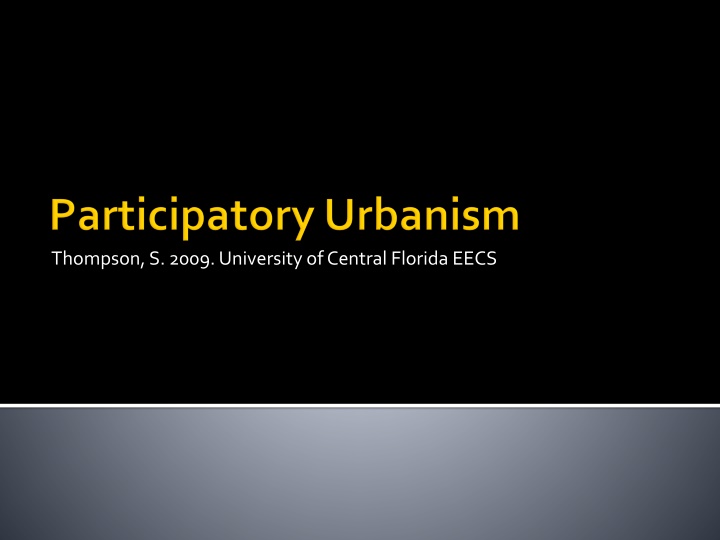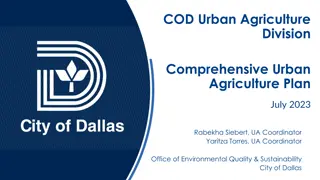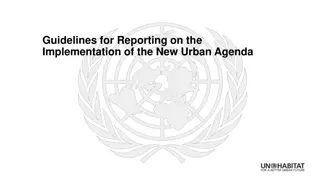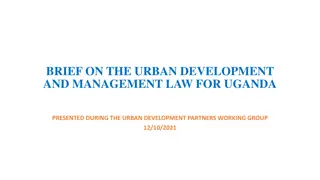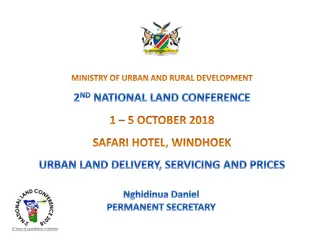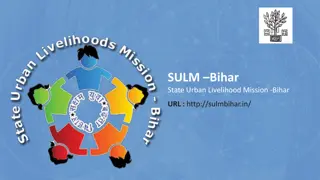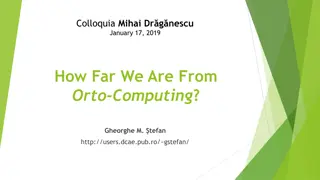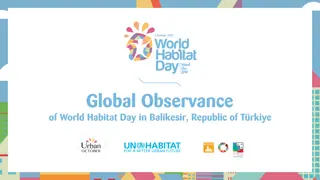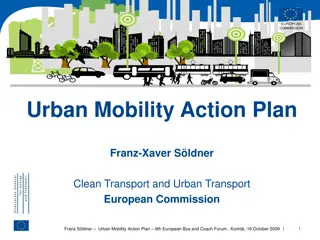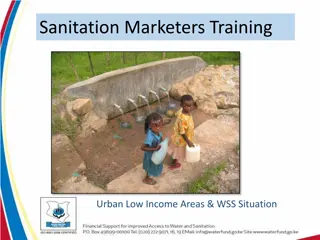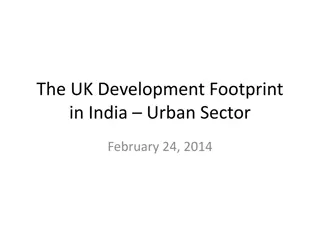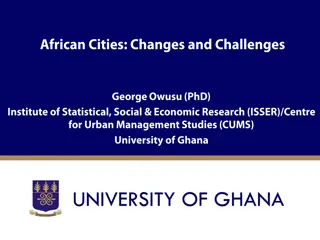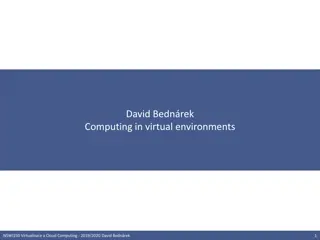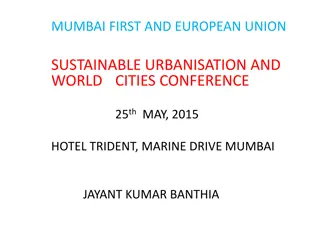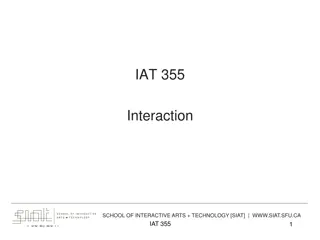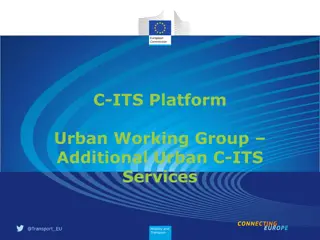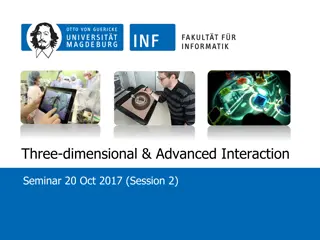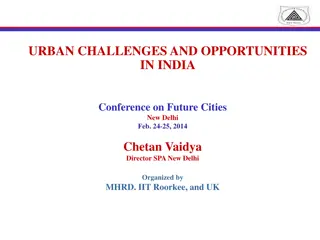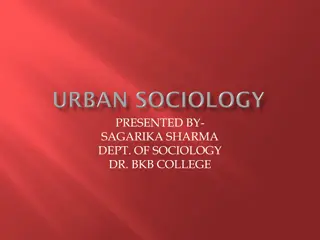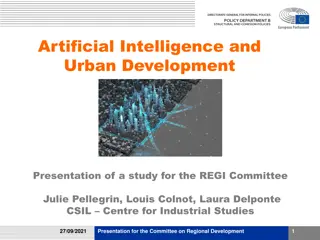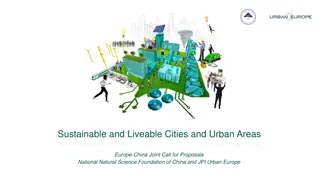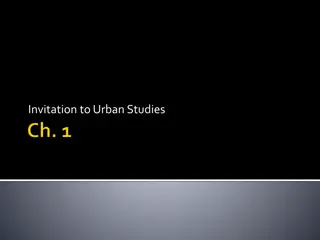Urban Computing: Interaction in Public Environments
Urban computing is an emerging field focusing on technology use in public spaces, studying human-environment interaction as access to computing extends beyond traditional settings. Participatory Urbanism emphasizes citizen participation and sharing in city planning, utilizing tools to collect and share data. The shift towards networked mobile devices transforms ordinary objects, empowering individuals to engage actively in urban development and shaping how we interact with urban environments.
Download Presentation

Please find below an Image/Link to download the presentation.
The content on the website is provided AS IS for your information and personal use only. It may not be sold, licensed, or shared on other websites without obtaining consent from the author.If you encounter any issues during the download, it is possible that the publisher has removed the file from their server.
You are allowed to download the files provided on this website for personal or commercial use, subject to the condition that they are used lawfully. All files are the property of their respective owners.
The content on the website is provided AS IS for your information and personal use only. It may not be sold, licensed, or shared on other websites without obtaining consent from the author.
E N D
Presentation Transcript
Urban computing is an emerging field of study that focuses on the use of technology in public environments such as cities, parks, forests and suburbs. It also studies the interaction between humans and such environments, which is becoming increasingly common as access to computing devices extends beyond home and office 02/17/2009 Participatory Urbanism 2
Participatory Urbanism is the open authoring, sharing, and remixing of new or existing urban technologies marked by, requiring, or involving participation, especially affording the opportunity for individual citizen participation, sharing, and voice. 02/17/2009 Participatory Urbanism 3
02/17/2009 Participatory Urbanism 4
02/17/2009 Participatory Urbanism 5
More than 50% of worlds the population lives in cities Change how we interact with ordinary events and objects Recast mobile devices as networked mobile personal measurement instruments 02/17/2009 Participatory Urbanism 6
Onboard Left behind Scattered Infrastructure 02/17/2009 Participatory Urbanism 7
Providing mobile toolkits for non-experts to become authors of new urban objects What is important to you? Group needs based dialogue tools What is important to a group? Empowering citizen to collect and share data What kind of data does everyone care about? 02/17/2009 Participatory Urbanism 8
02/17/2009 Participatory Urbanism 9
Encounter your familiar strangers, people we see frequently, but choose to ignore Mobile phone application that renders participants the immediate area, identification using Bluetooth http://www.urban-atmospheres.net/Jabberwocky/info.htm 02/17/2009 Participatory Urbanism 10
Place based ringtones to get an idea of who is around you Each user selects their own ringtone Bluetooth identification mechanism http://www.urban-atmospheres.net/Hullabaloo/index.html 02/17/2009 Participatory Urbanism 11
Project recently thrown away trash Provide new experience and mechanism for everyday urban items 02/17/2009 Participatory Urbanism 12
HOLLABACKNYC.COM PARKSCAN.ORG Phone photos of street harassers Phone photo of broken parks, etc. Sent directly to city work request system 02/17/2009 Participatory Urbanism 13
Parkscan.org Search 02/17/2009 Participatory Urbanism 14
Static sensors that report on air quality for a zip-code when they receive an SMS Positive feedback from persons with respiratory issues Over 10,000 reports generated (2007) 02/17/2009 Participatory Urbanism 15
Based on Sensing Atmosphere by Paulos, et. al. 02/17/2009 Participatory Urbanism 16
The World Health Organization estimates that 2 million deaths each year can be attributed to air pollution 2005 Report 02/17/2009 Participatory Urbanism 17
Series of static sensors in common locations Sensors attached to personal mobile devices for data capture Positions citizens as the driving element behind data collection and reporting 02/17/2009 Participatory Urbanism 18
Personal mobile air-quality measurement Two weeks of data collection in Ghana Carbon monoxide readings (top left) Debunk theory that mobile devices are solely for communication 02/17/2009 Participatory Urbanism 19
7 cab drivers (tube), 3 students (mobile pack) Sensor pack included GPS logger Carbon monoxide sensor Sulfur dioxide or nitrogen oxide sensor Areas of high concentration Airport (highlighted) Large neighborhoods 02/17/2009 Participatory Urbanism 20
CAB SENSOR PACKAGE INDIVIDUAL SENSOR PACKAGE 02/17/2009 Participatory Urbanism 21
Based on N-SMARTS: Networked Suite of Mobile Atmospheric Real-time Sensors by Paulos, et. al. 02/17/2009 Participatory Urbanism 22
Cell phone ideal for environmental sensing Co-located with user GPS Communication network Ubiquitous (and relatively low-cost) Problem areas Sensor calibration Storage practices (pocket, handbag) Power management 02/17/2009 Participatory Urbanism 23
Shared goals of N-SMARTS (Berkley) and CommonSense (Intel) Develop platform to understand challenges of mobile sensing platforms Does this information affect individual/group behavior? Scalable architecture Develop algorithms to promote accurate sensing despite typical user habits 02/17/2009 Participatory Urbanism 24
Record cell phone signal strength to build coverage map 02/17/2009 Participatory Urbanism 25
COTS Platform used for initial testing Lascar EL-USB-CO Carbon Monoxide data logger Garmin Qwest GPS NO2, SO2 or O3 data logger from BW Tech. Synchronized clocks Else data skew occurs Deployed in Ghana study 02/17/2009 Participatory Urbanism 26
Integrate directly with phone CO and Nox sensors Temperature sensor (for calibration) Accelerometer for activity inference Bluetooth radio for communication w/phone On board A-GPS used for location 02/17/2009 Participatory Urbanism 27
Phones with MSM chips and Assisted-GPS Nokia N95 Allows for fast cold starts, indoor location fixes MEMS PM2.5 Measures particle matter by depositing aerosol particles on a thin-film bulk acoustic resonator (FBAR) oscillation @ 1.6Ghz 02/17/2009 Participatory Urbanism 28
Based on Common Sense: Mobile Environmental Sensing Platforms to Support Community Action and Citizen Science by Aoki, et. al. 02/17/2009 Participatory Urbanism 29
Deployment of N- SMARTS test boards on street sweepers in San Francisco City Technology Micro CF carbon monoxide sensor A MICS dual No2/Co2 Sensor An Analog Devices ADXL330 3-axis accelerometer National Semiconductor LM60 temperature sensor 02/17/2009 Participatory Urbanism 30
Data transmitted via GSM text messages Web-based visualization tools Currently deployed handheld devices Flickr 02/17/2009 Participatory Urbanism 31
Automatic Calibration Gaussian process models suggest sensors in close proximity can be calibrated to one another or accurate references in the environment Context Inference Inferring the context of the phone, obstructions, location, action, activity, etc. Super Sampling Increase system precision in sensor rich environments Social Impact 02/17/2009 Participatory Urbanism 32
Our future mobile devices: (1) that they will be equipped with more sensing and processing capabilities (2) that they will also be driven by an architecture of participation and democracy that encourages users to add value to their tools and applications as they use them http://www.youtube.com/watch?v=WCSYeoG3OSk @ 37:05 02/17/2009 Participatory Urbanism 33
02/17/2009 Participatory Urbanism 34
Based largely on research by the Urban Atmospheres Team Eric Paulos (Intel Research Berkeley) Ian Smith (Intel Research Seattle) RJ Honicky (UC Berkeley) et al. http://www.urban-atmospheres.net/ http://www.citris-uc.org/CRE-Feb14-2007 http://www.youtube.com/watch?v=WCSYeoG3OSk 02/17/2009 Participatory Urbanism 35
N-SMARTS: Networked Suite of Mobile Atmospheric Real-Time Sensors R.J. Honicky, Eric Brewer, Eric Paulos, Richard White, In Networked Systems for Developing Regions 2008, a workshop of SIGCOMM Sensing Atmosphere Eric Paulos, RJ Honicky, and Elizabeth Goodman, Workshop position paper for the Sensing on Everyday Mobile Phones in Support of Participatory Research at ACM SenSys 2008, November 2007 P.M. Aoki, R.J. Honicky, A. Mainwaring, C. Myers, E. Paulos, S. Subramanian, and A. Woodruff. Common Sense: Mobile Environmental Sensing Platforms to Support Community Action and Citizen Science (demonstration). Adjunct Proceedings Ubicomp 2008, Sep. 2008, 59-60. 02/17/2009 Participatory Urbanism 36
Urban Sensing (CENS / UCLA) SensorPlanet (Nokia) AIR (Preemptive Media) SenseWeb (Microsoft) The Urban Pollution Monitoring Project (Equator UK) CommonSense 02/17/2009 Participatory Urbanism 37
